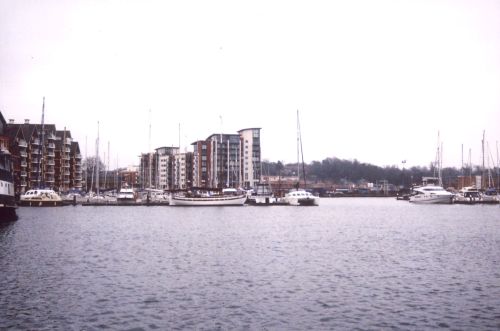England's Historic Seascapes: Southwold to Clacton
Oxford Archaeology (South), 2007. https://doi.org/10.5284/1000277. How to cite using this DOI
Data copyright © Historic England unless otherwise stated
This work is licensed under the ADS Terms of Use and Access.
Primary contact
Oxford Archaeology (South)
Janus House
Osney Mead
Oxford
OX2 0ES
UK
Tel: 01865 263800
Fax: 01865 793496
Resource identifiers
- ADS Collection: 746
- ALSF Project Number: 4729
- DOI:https://doi.org/10.5284/1000277
- How to cite using this DOI
England's Historic Seascapes:
Southwold to Clacton
ALSF Project Number 4729
Oxford Archaeology, 2007
Orwell Estuary
Maritime Ipswich
Ipswich was a significant trading harbour in the Roman period and went on to become the country's busiest port in the Anglo-Saxon era (Wheatley 1990, 59). The settlement was known as Gipeswic at this time and centred around the quay. Ipswich was an extensive settlement by the mid 8th century and a major pottery production centre. By the 10th century AD, the town had become important; situated at the heart of the great wool producing area at the head of a sheltered and easily navigable estuary (Wren 1976, 132). The Anglo-Saxon Chronicle records that the town was sacked in 991 and 1000AD and heavy fines levied on the inhabitants (Wren 1976 132). Ipswich operated a mint from the 970s, which continued through to the 13th century.
From the 10th to 14th century the quays handled wool from the Stour and Gipping valleys (Wren 1976, 133). It received its first charter in 1199 and the town's official seal dating from 1200 is the earliest known depiction of a ship with a modern rudder instead of traditional steering oar (Wheatley 1990, 69).
The zenith of maritime Ipswich was c 1500 when the port was known as the shipyard of London, constructing vessels up to 100 tons (Wren 1976, 134). At one time the shipyards extended 6 miles downstream to Pin Mill and many Thames Sailing barges and large colliers were built there (ibid). This heyday ended with the construction of the iron hull (Edwards 1991).
After this trading became predominantly coastal, mainly exporting cloth and agriculture and importing a wide range of goods, dominated by coal until 1750. By 1800 the harbour was almost choked with silt (Wheatley 1990, 69). Added to the increasing dominance of Great Yarmouth Ipswich increasingly became non-maritime (Wren 1976, 141). In 1805 an act was obtained to improve the port, after 50 years of dredging and dock building trade recovered (Wheatley 1990, 69).
The emergence of the railways from 1846 brought new industry to the docks including packet routes to London and paddle steamers for passengers to Harwich on every tide (Wren 1976, 141) Trade has continually soared since WW2 (Wren 1976, 148) and the docks are currently undergoing a period of regeneration for commercial and residential needs.

Caption: View of marina and new development in Ipswich wet dock
Photo courtesy:Oxford Archaeology








